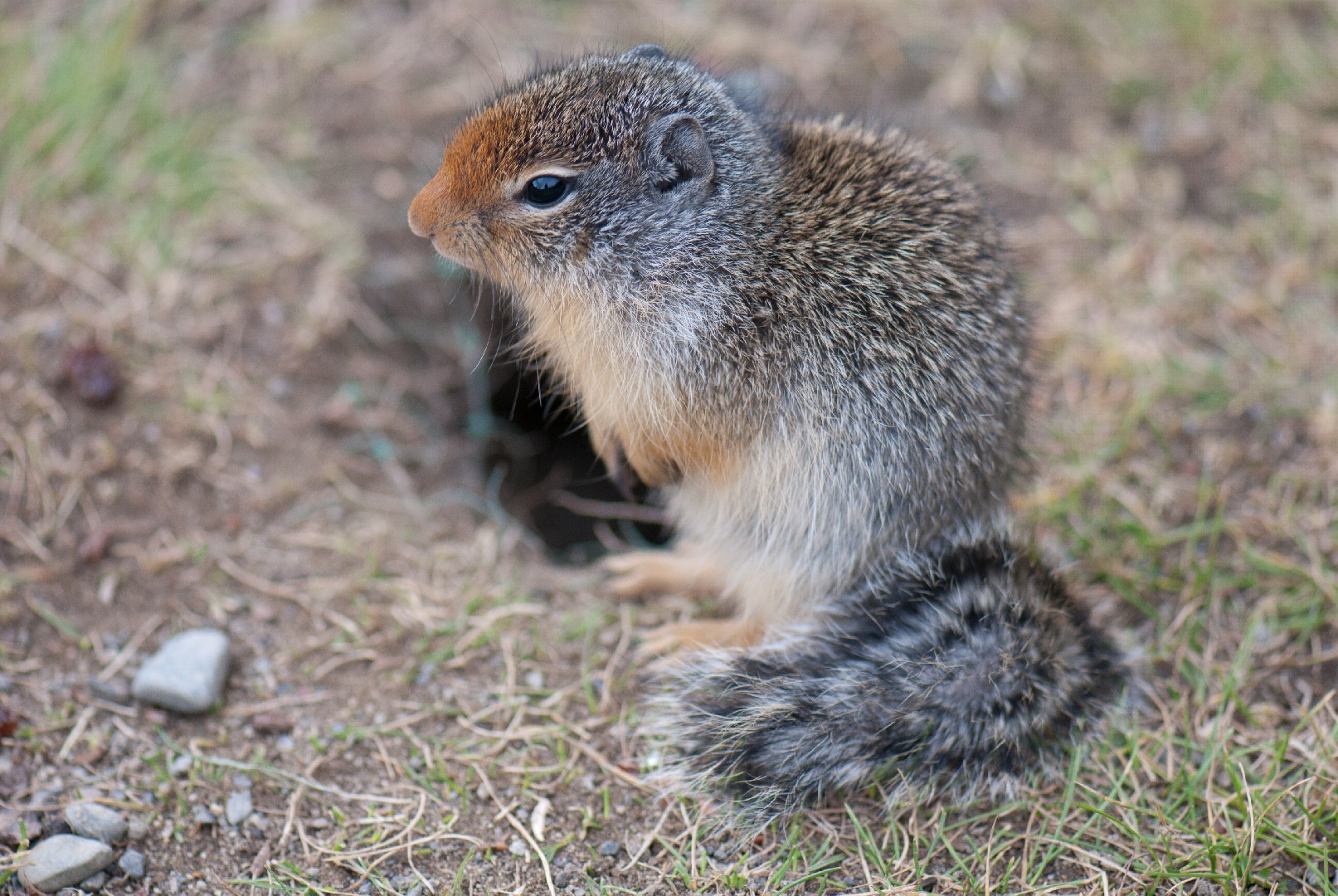Columbian ground squirrel
A species of Ground squirrels Scientific name : Urocitellus columbianus Genus : Ground squirrels
Columbian ground squirrel, A species of Ground squirrels
Scientific name: Urocitellus columbianus
Genus: Ground squirrels
Content
Description General Info
 Photo By Thomas Quine , used under CC-BY-2.0 /Cropped and compressed from original
Photo By Thomas Quine , used under CC-BY-2.0 /Cropped and compressed from original Description
The Columbian ground squirrel is one of the largest members of the genus, the largest being the Arctic ground squirrel. They have a relatively sturdy, robust build. They measure 325–410 mm (12.8–16.1 in) in length overall, with a tail measuring 80–116 mm (3.1–4.6 in). The hind feet measure 47–57 mm (1.9–2.2 in) and the ear 16–22.5 mm (0.63–0.89 in). The hair is dense and relatively short. The facial fur is bronze across the bridge of the nose. The fur along the back, legs, and feet is a more cinnamon buff, with darker fur closer to the body. There is a pale beige to buff ring of fur around the eye. The neck fur is gray along the sides of the cheeks. The flanks may be light beige or gray. They have a darker tail, with darker underfur and some lighter beige markings above and dark to grayish white below. Molting occurs diffusely, without a clear line of delineation. Two subspecies have been described, which vary in appearance. Compared with U. c. columbianus, the population U. c. ruficaudus has a tail more rufous and less gray above. The sides of the face and throat are also more deeply rust shaded. The legs and feet are darker as well. The skull of U. c. ruficaudus is broader, with more robust zygomatic arches. Several albino variants have been found. An albino squirrel was captured alive by a student near Pullman, Washington in 1932. It had been in an alfalfa field. The animal had white hair and pink eyes. A zoologist reported intentions to keep the animal alive to study genetic inheritance patterns. The following year, he reported finding three more young albinos in the same area. Around 30 years prior, two albino skins had been collected, also near Pullman. It was proposed that the recessive trait persisted in the locality, appearing at sporadic intervals. 
General Info
Lifespan
3-6 years
Diet
Columbian ground squirrel are primarily herbivorous, preferentially grazing on the grassy blooms of their habitat. Their diet consists largely of grasses, seeds, nuts, and roots, with occasional consumption of insects during scarcity.
Appearance
Columbian ground squirrel is a small, stout-bodied rodent with a short tail. Its fur is thick and coarse, predominantly grey-brown, with a speckled appearance due to black and white hairs interspersed. The underside is paler, often buff to white. Their fur may darken in winter. No significant differences are found between genders or subspecies in appearance.
Behavior
Columbian ground squirrel exhibits distinctive diurnal and hibernation patterns. Its feeding activity includes gathering and storing food in burrows. Settling in colonies, they show robust social interactions, often creating alarm calls to signal predator threats. This species marks its territory via scent, making them highly territorial. Their hibernation strategy facilitates survival in harsh winter conditions.
Population
Stable
Scientific Classification
Phylum
Chordates Class
Mammals Order
Gnawing mammals Family
Squirrels Genus
Ground squirrels Species
Columbian ground squirrel